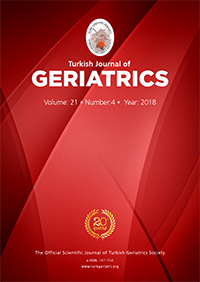2University of UludaÄź, School of Medicine, Biostatistics, Bursa, Turkey DOI : 10.31086/tjgeri.2018.52 Introduction: Parkinson"s disease is the second leading neurodegenerative disease worldwide; however, its pathogenesis remains unclear. Recently, the neuroinflammation theory, one of the theories explaining the pathogenesis of Parkinson"s disease, has become prominent. We investigated the relationship between Parkinson"s disease and inflammatory markers including epicardial adipose tissue thickness, neutrophil-lymphocyte ratio, and thrombocyte-lymphocyte ratio.
Materials and Method: Seventeen patients with Parkinson"s disease and 21 healthy individuals (control group) were enrolled. All the patients were evaluated by a neurologist using the Unified Parkinson"s Disease Rating Scale and Hoehn and Yahr staging scale. A cardiologist measured epicardial adipose tissue thickness using echocardiography. After routine laboratory analyses, neutrophil-lymphocyte and thrombocyte-lymphocyte ratios were calculated for each patient.
Results: Both epicardial adipose tissue thickness and thrombocyte-lymphocyte ratio were higher in the patient group than in the control group, but the difference was significant only for the former. Epicardial adipose tissue thickness was significantly correlated with the scores of 2nd and 3rd sections of the Unified Parkinson"s Disease Rating Scale, which evaluate activities of daily living and motor functions, respectively, and with the total Unified Parkinson"s Disease Rating Scale score. Inflammatory marker evaluation according to the disease stage based on the Hoehn and Yahr staging scale revealed a significant difference in epicardial adipose tissue thickness between stage 1 and stage 2 patients. Moreover, there was a significant correlation between disease duration and thrombocyte-lymphocyte ratio.
Conclusion: Our results support the hypothesis that inflammation plays a role in the pathogenesis of Parkinson"s disease.
Keywords : Parkinson disease; Inflammation; Echocardiography
